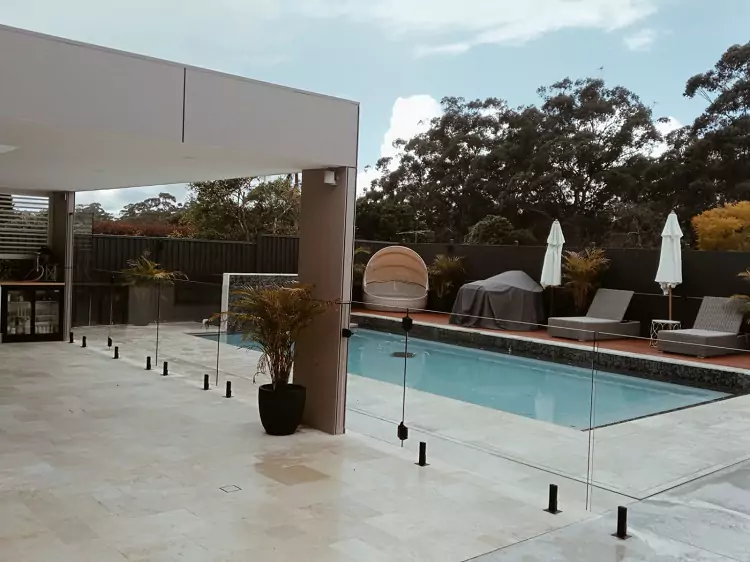
Sydney Landscaping A Small Garden Design
When it comes to designing a small garden, incorporating terraces can be a smart and practical solution. Terraces offer a range of benefits, from maximizing space to creating depth and dimension. Let's explore these advantages in more detail.
Maximizing Space
In a small garden, space is often at a premium. Terraces provide an excellent opportunity to maximize the use of available space. By creating multiple levels, you can effectively utilize vertical space and create distinct areas for different activities. For example, you can have a dining terrace, a seating area, and a garden bed all within a limited footprint. This allows you to enjoy various elements of your garden without feeling cramped.
Creating Depth and Dimension
Terraces add visual interest to a small garden by creating depth and dimension. By incorporating different levels, you can create a sense of depth in your garden design. This adds visual appeal and makes the space feel larger than it actually is. Additionally, terraces enable you to incorporate various landscaping elements, such as retaining walls, steps, and planters. These features further enhance the overall aesthetics of your garden while adding texture and depth.
Enhancing Accessibility
Another advantage of incorporating terraces in a small garden design is the enhanced accessibility they provide. By creating level spaces, you can easily access different areas of your garden without the need for steep slopes or uneven ground. This is particularly beneficial for individuals with mobility issues or those who want to make their garden more accessible for everyone. Additionally, terraces can be designed to include pathways and steps, ensuring safe and convenient navigation throughout the garden.
When incorporating terraces, it's important to consider the overall design of your garden. Pay attention to materials and aesthetics that complement your existing landscape. For example, using natural stone or timber for terrace construction can create a harmonious blend with the surrounding environment. Additionally, ensure proper drainage and irrigation to prevent water accumulation and ensure the health of your plants.
Lastly, when selecting plants for your terraces, consider their size and growth habits. Opt for plants that won't outgrow the space and choose a variety of heights and textures to enhance the overall design.
By incorporating terraces into your small garden design, you can make the most of limited space while creating an aesthetically pleasing and functional outdoor oasis. Whether you use them to maximize space, add depth, or enhance accessibility, terraces can transform your small garden into a delightful and inviting retreat.
Design Considerations for Retaining Walls and Landscaping
When incorporating retaining walls and terraces into your small garden design, there are several important design considerations to keep in mind. These considerations include the choice of materials and aesthetics, drainage and irrigation, and plant selection and placement.
Materials and Aesthetics
When selecting materials for your retaining walls and terraces, it's important to consider both functionality and aesthetics. The materials you choose should be durable, able to withstand the pressures of soil and water, and complement the overall design of your small garden.
Retaining walls can be constructed using various materials such as concrete blocks, natural stone, brick, or timber. Each material offers different visual characteristics and can create a unique ambiance in your garden. Consider the existing style of your home and other landscaping elements when choosing the appropriate materials for a cohesive look.
Terraces can be constructed using similar materials to the retaining walls, or you can opt for materials that provide a contrasting texture and visual interest. For example, incorporating wooden decking or paving stones can create a distinct and inviting space within your garden.
Drainage and Irrigation
Proper drainage is essential for preserving the integrity of both retaining walls and terraces. Without proper drainage, excess water can accumulate, leading to soil erosion, structural damage, and potential waterlogging issues.
When designing your retaining walls and terraces, consider incorporating drainage systems such as weep holes, gravel-filled trenches, or perforated pipes. These drainage features will help redirect water away from the walls and terraces, preventing water buildup and potential damage.
Additionally, it's important to consider irrigation for your plants and garden beds. Ensure that irrigation systems are properly installed to deliver water efficiently to your plants while avoiding water accumulation near the retaining walls and terraces.
Plant Selection and Placement
The selection and placement of plants play a crucial role in enhancing the aesthetic appeal of your retaining walls and terraces. Choose plants that are suitable for your local climate, require minimal maintenance, and complement the overall design of your small garden.
When selecting plants for your retaining walls, consider using trailing or cascading plants that can soften the edges and create a lush, green backdrop. Planting groundcover plants at the base of the walls can also help prevent soil erosion and provide additional visual interest.
For terraces, consider incorporating plants in containers or raised planters to maximize space utilization. Choose plants of varying heights and textures to create depth and dimension within the terraced areas. Mixing flowering plants, evergreens, and ornamental grasses can add color and visual interest throughout the seasons.
By carefully considering materials, drainage and irrigation, and plant selection and placement, you can ensure that your retaining walls and terraces not only serve their functional purposes but also enhance the overall beauty and functionality of your small garden design.